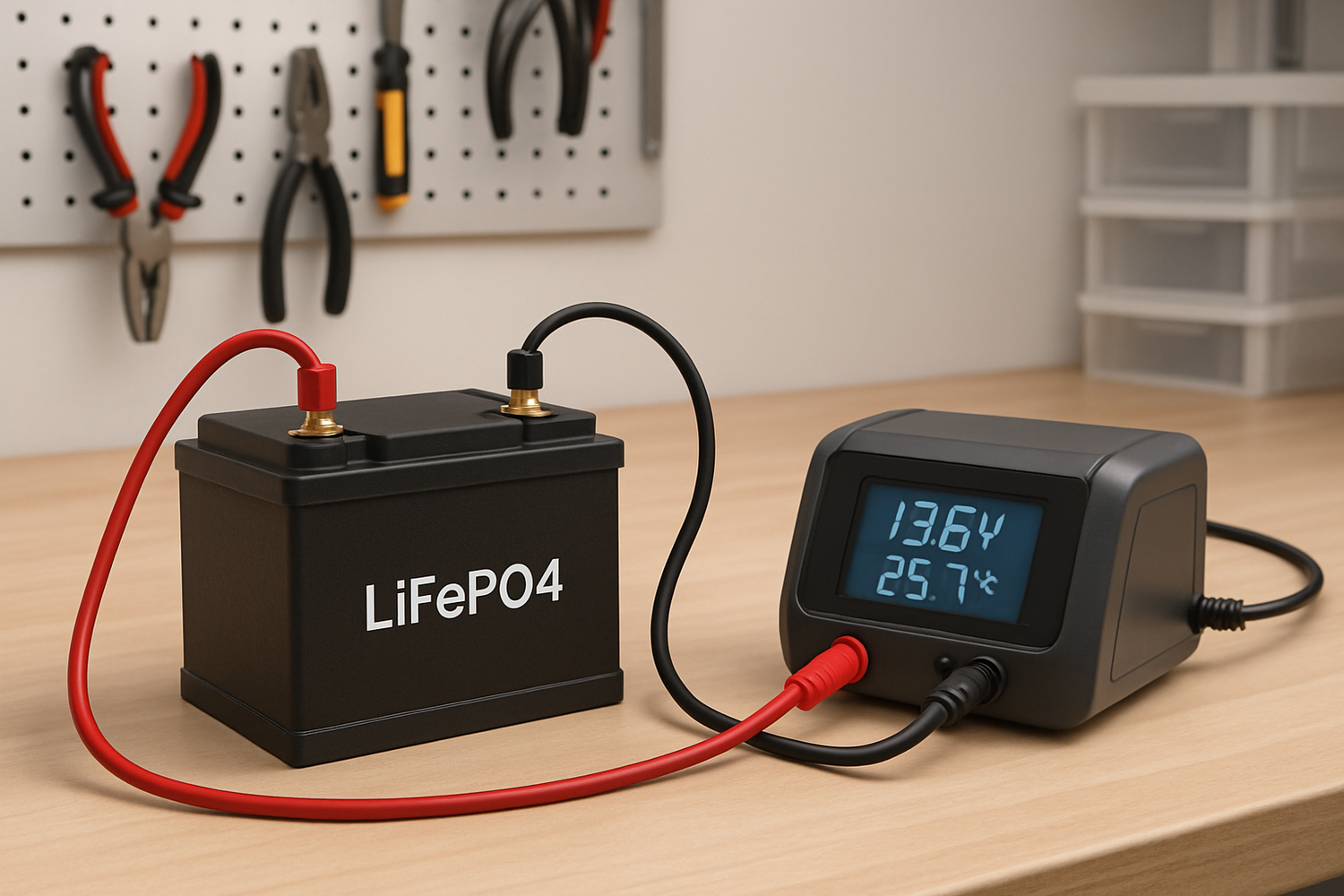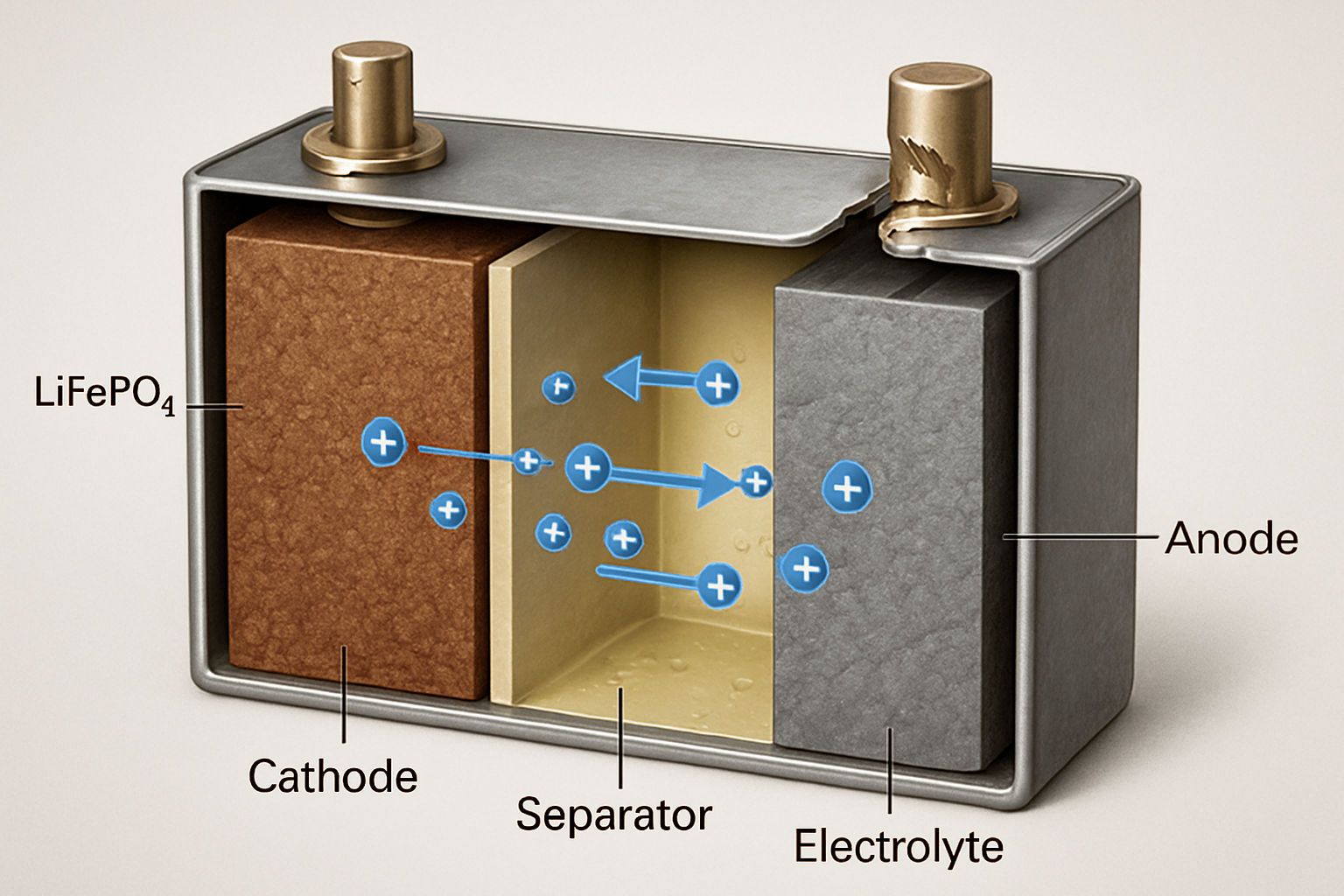Lithium Iron Phosphate (LiFePO4) batteries are a cornerstone of modern energy storage, known for their exceptional safety, long cycle life, and thermal stability. To fully benefit from these advantages, proper charging is not just a recommendation—it's a requirement. Understanding and avoiding common LiFePO4 charging mistakes ensures you get the maximum performance and lifespan from your investment. This article outlines seven critical errors to steer clear of when charging your LiFePO4 battery packs.
Mistake 1: Using the Wrong Charger
The Problem with Lead-Acid Chargers
One of the most frequent and damaging LiFePO4 charging errors is using a charger designed for lead-acid batteries. While it might seem to work initially, lead-acid chargers have different charging profiles that are harmful to LiFePO4 cells. They often include stages like 'equalization' or 'desulfation,' which apply high voltages that can permanently damage LiFePO4 cells and trigger the Battery Management System (BMS) to shut down. Furthermore, their 'float' charge stage is unnecessary for LiFePO4 and can cause long-term cell imbalance.
Selecting a Dedicated LiFePO4 Charger
Always use a charger specifically designed for LiFePO4 chemistry. These chargers use a two-stage Constant Current/Constant Voltage (CC/CV) algorithm. The charger supplies a constant current until the battery reaches a set voltage (typically 14.4V-14.6V for a 12V pack), then holds that voltage while the current tapers off. This method ensures a safe, fast, and complete charge without stressing the cells.
Mistake 2: Ignoring Temperature Limits
The Dangers of Charging in Extreme Temperatures
Temperature has a significant impact on battery health. Charging a LiFePO4 battery below 0°C (32°F) is particularly dangerous. It can cause lithium plating on the anode, a condition that permanently reduces capacity and can create an internal short circuit. Conversely, charging at temperatures above 45°C (113°F) accelerates chemical degradation and reduces the battery's overall lifespan. The optimal charging temperature is typically between 10°C and 35°C (50°F to 95°F).
Best Practices for Temperature Management
Before charging, allow the battery to acclimate to a safe temperature. If you operate in cold climates, consider insulated battery boxes or heating pads. A high-quality BMS will include temperature sensors that prevent charging in unsafe conditions, acting as a critical safety feature. According to a report from the The State of Energy Innovation, research into solid-state electrolytes aims to enhance safety and potentially widen operating temperatures, but for current technologies, temperature management remains crucial.
Mistake 3: Incorrect Voltage and Current Settings
The Impact of Over-Voltage
Exceeding the recommended charging voltage, even slightly, puts stress on the cells. A 12V LiFePO4 pack is fully charged at around 14.6V. Pushing the voltage higher can lead to overcharging, which degrades the electrolyte and reduces cycle life. While the BMS will disconnect the battery to prevent catastrophic failure, repeatedly hitting this limit is a sign of an incorrect charging setup.
The Consequences of Over-Current
Charging a battery too quickly generates excess heat and can damage its internal structure. The recommended charge current is expressed as a 'C-rate.' A 0.5C rate for a 100Ah battery means charging at 50 amps. While some LiFePO4 batteries can handle a 1C charge, a slower rate (0.2C to 0.5C) is generally better for longevity. Always consult the manufacturer's specifications for the maximum recommended charging current.
Mistake 4: Disregarding the Battery Management System (BMS)
What the BMS Does
The BMS is the brain of your battery pack. It's a crucial safety component that protects against over-voltage, under-voltage, over-current, short circuits, and extreme temperatures. It also handles cell balancing, which is vital for the pack's health and performance.
Relying Solely on the BMS as a Charger Controller
A common misconception is that the BMS can compensate for an incorrect charger. The BMS is a safety net, not a charge controller. Its job is to disconnect the battery in a fault condition. If your charging setup regularly causes the BMS to intervene, you are stressing the battery and relying on a last line of defense. Proper charging practices should ensure the BMS rarely needs to engage its protective functions.
Mistake 5: Frequent and Unnecessary Full-Cycle Charging
The Myth of 'Battery Memory'
Unlike older Nickel-Cadmium (NiCd) batteries, LiFePO4 chemistry does not suffer from a 'memory effect.' This means you do not need to fully discharge the battery before recharging it. In fact, doing so is detrimental to its health.
The Benefits of Partial State of Charge (PSoC)
LiFePO4 batteries are happiest when operated in a partial state of charge. Consistently keeping the battery between 20% and 80% State of Charge (SoC) can dramatically increase its cycle life. As detailed in the Ultimate Reference for Solar Storage Performance, a battery cycled to only 50% Depth of Discharge (DoD) may last thousands of cycles more than one consistently cycled to 100% DoD. Forcing a full 100% charge is only necessary occasionally for cell balancing purposes.
Mistake 6: Neglecting Cell Balancing
Why Cell Balance Matters
A battery pack consists of multiple individual cells connected in series. Due to tiny manufacturing variances, some cells will have slightly different voltages or capacities. Without balancing, these differences become more pronounced over time. An imbalanced pack is limited by its weakest cell; the entire pack will stop charging when one cell hits the high-voltage limit, and stop discharging when one cell hits the low-voltage limit, reducing the usable capacity.
How to Ensure Proper Balancing
A quality BMS will automatically perform cell balancing. Passive balancing bleeds a small amount of energy from higher-voltage cells, while active balancing transfers energy from higher cells to lower ones. To give the BMS time to work, it's good practice to occasionally charge the battery to 100% and let it sit on the charger for a short period, allowing the balancer to equalize all cells.
Mistake 7: Storing the Battery at the Wrong State of Charge
The Problem with Storing at 100% or 0%
Long-term storage requires specific conditions. Storing a LiFePO4 battery at a 100% charge for extended periods accelerates capacity loss. Conversely, storing it when fully depleted (0% SoC) risks the voltage dropping below the safe low-voltage cutoff, which can cause irreversible damage.
Ideal Storage Conditions
For long-term storage, you should bring the battery to a 50-60% state of charge. Store it in a cool, dry place. The low self-discharge rate of LiFePO4 means it will hold its charge for many months. Check the voltage every 3-6 months and apply a brief charge if needed to bring it back to the ideal storage level.
A Smarter Approach to Charging
Avoiding these seven critical mistakes is fundamental to achieving the impressive lifespan that LiFePO4 batteries promise. By using a dedicated charger, respecting temperature limits, applying correct voltage and current, and understanding the role of the BMS, you protect your energy storage system. Smart charging strategies, which integrate renewable energy sources and storage, are becoming increasingly important. As noted in the Innovation Outlook: Smart charging for electric vehicles report by IRENA, complementing grid charging with on-site storage helps smooth out demand and maximize the use of clean energy. Adopting these best practices for charging LiFePO4 packs ensures your system operates safely, reliably, and efficiently for years to come.
Frequently Asked Questions
Can I use a solar panel to charge a LiFePO4 battery directly?
No. A solar panel's output voltage fluctuates with sunlight. You must use a solar charge controller with a specific LiFePO4 charging profile. The controller regulates the voltage and current from the panels to deliver a safe and optimized charge to the battery.
How do I know if my LiFePO4 battery is fully charged?
A dedicated LiFePO4 charger will indicate when the charge cycle is complete, often with an indicator light. After disconnecting the charger, a fully charged 12V LiFePO4 battery will have a resting voltage of approximately 13.4V to 13.6V once the surface charge dissipates.
What is the ideal charging current for a 100Ah LiFePO4 battery?
A charge rate between 0.2C (20 amps) and 0.5C (50 amps) is generally recommended for a 100Ah battery. Slower charging is typically gentler on the battery and can help promote a longer lifespan. Always verify the recommended C-rate in the manufacturer's documentation.
Is it okay to leave a LiFePO4 battery on a trickle charger?
No. LiFePO4 batteries do not require a float or trickle charge. Once fully charged, the charger should be disconnected. A continuous trickle charge can interfere with the BMS and potentially lead to cell imbalance over extended periods.





Leave a comment
All comments are moderated before being published.
This site is protected by hCaptcha and the hCaptcha Privacy Policy and Terms of Service apply.